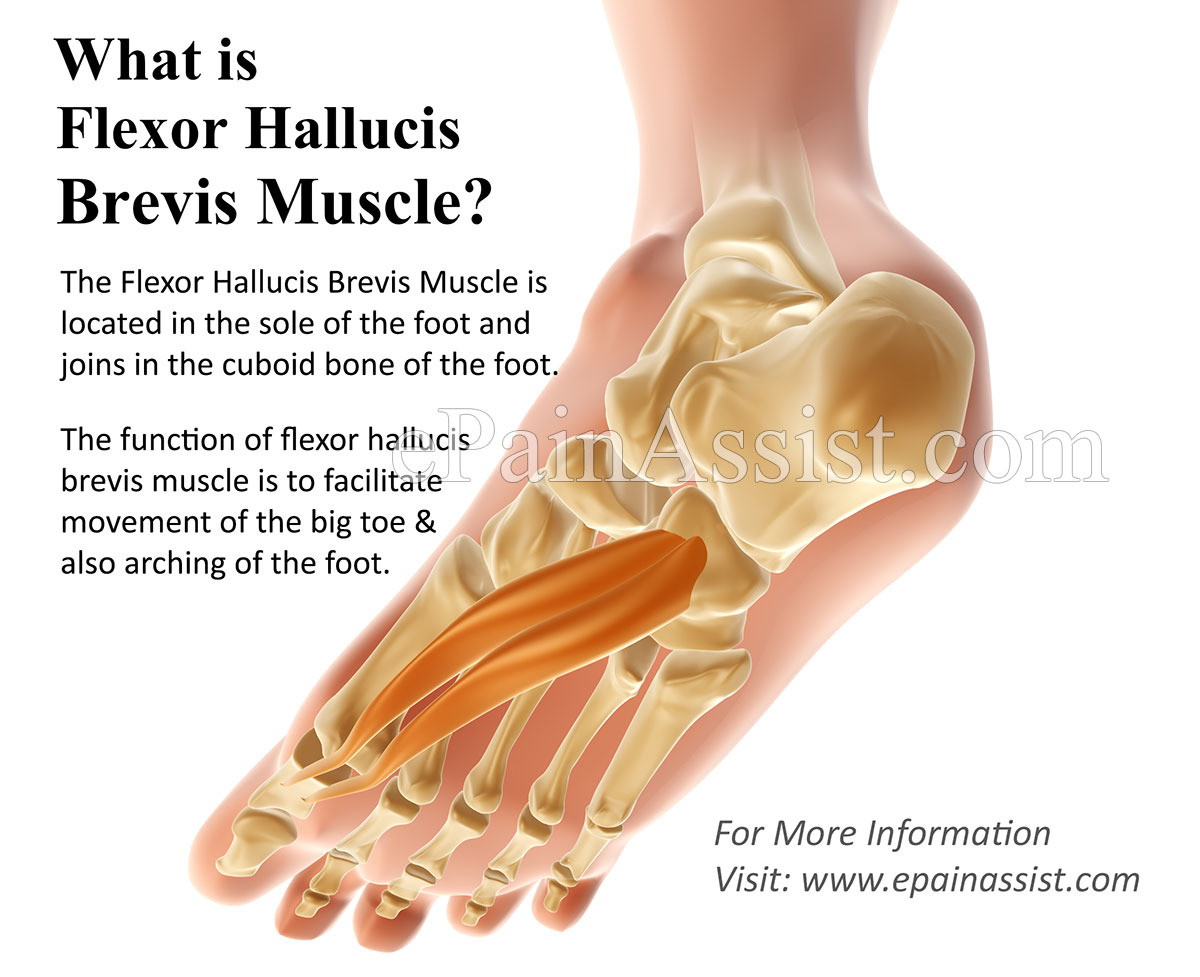What is Flexor Hallucis Brevis Muscle and What is its Function?
The Flexor Hallucis Brevis Muscle is located in the sole of the foot and joins in the cuboid bone of the foot. This muscle extends across the sole of the foot and attaches to the base of the big toe. The function of flexor hallucis brevis muscle is to facilitate movement of the big toe and also arching of the foot. The Flexor Hallucis Brevis Muscle belongs to a group of several muscles that constitute the sole of the foot and it also helps in flexing and curling of the toes. The Flexor Hallucis Brevis Muscle is innervated by the medial plantar nerve which traverses behind the knee and down the leg. Blood is supplied to this muscle by the medial plantar artery. Due to the location of flexor hallucis brevis muscle being at the sole of the foot, it is prone to strains and injuries as the sole of the feet is one of the most used area of the body which results in the muscles being overworked. Athletes involved in running and sprinting and people who have a job where they have to stand for prolonged periods of time are prone to flexor hallucis brevis pain caused due to strains or injuries. Treatment for flexor hallucis brevis pain or strain is mostly conservative in the form of gels, coolants, and supports.

Signs and Symptoms of Flexor Hallucis Brevis Pain
Some of the symptoms of flexor hallucis brevis pain are:
- Severe pain at the ball of the foot radiating to the big toe
- Difficulty with ambulation
- Visible deformity of the toe
What Can Cause Flexor Hallucis Brevis Pain?
Some of the activities that may cause flexor hallucis brevis pain or strain are:
- Running or walking on uneven surfaces can cause flexor hallucis brevis pain or strain
- Walking on hard concrete floors for prolonged periods of time
- Wearing high heels can also cause flexor hallucis brevis pain or strain.
- Wearing shoes that are too narrow and tight can also cause a strain or injury to the Flexor Hallucis Brevis Muscle
Risk Factors of Flexor Hallucis Brevis Muscle Pain
Some of the medical conditions which can result in strain or injury to the Flexor Hallucis Brevis Muscle are:
- Plantar fasciitis
- Plantar warts
- Hammertoe Deformity
- Diabetic neuropathy
- Gout
- Ingrown toenail
- Bunions
What is the Treatment for Flexor Hallucis Brevis Pain?
Below mentioned are some of the methods for treating flexor hallucis brevis pain:
Cold Therapy to Treat Flexor Hallucis Brevis Pain: There are many forms of gels and cold packs available in the market and over the counter which can go a long way in helping with treatment of flexor hallucis brevis pain. The gels that are available are normally used immediately after an injury or strain as it immediately cools the area and prevents swelling from developing in the area. Cold therapy gel is used by rubbing it at the injured site and the surrounding areas.
Foot Wrap to Treat Flexor Hallucis Brevis Pain or Strain: This can be used for compression of the injured flexor hallucis brevis muscle. Immediate compression helps a great deal in reducing flexor hallucis brevis pain and inflammation and also prevents development of swelling in the foot due to injured or strained Flexor Hallucis Brevis Muscle.
- Flexor Hallucis Brevis https://www.physio-pedia.com/Flexor_Hallucis_Brevis
Also Read:
